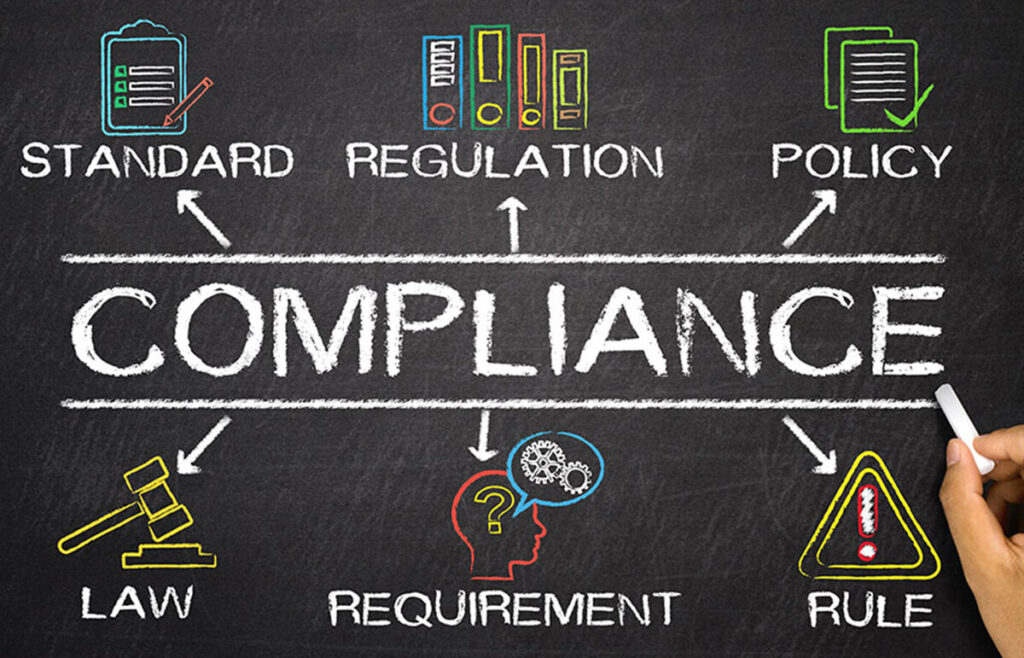New regulations not only ensures compliance but also enhances the overall quality and safety of construction projects. This article provides an overview of some of the changes and how this can be managed effectively.
Overview of recent regulatory changes and compliance requirements:
1. Building Safety and Standards
National Construction Code (NCC) Updates:
- Fire Safety: The NCC has seen updates to improve fire safety standards, including stricter requirements for fire-resistant cladding and the installation of sprinkler systems in high-rise buildings.
- Energy Efficiency: Recent revisions focus on enhancing energy efficiency in buildings, such as better insulation requirements, improved window performance, and more efficient HVAC systems.
Cladding Regulations:
- Combustible Cladding: Regulations have been tightened regarding the use of combustible cladding materials, following high-profile incidents like the Grenfell Tower fire. Building owners are now required to replace non-compliant cladding with fire-resistant alternatives.
2. Work Health and Safety (WHS)
WHS Regulations:
- Safety Management Systems: There is a stronger emphasis on implementing comprehensive safety management systems on construction sites to manage and mitigate risks.
- Health and Safety Plans: Updated regulations require more detailed health and safety plans, including protocols for dealing with high-risk activities and ensuring worker safety.
Mental Health:
- Support Initiatives: There is a growing focus on mental health in the workplace, with new programs and regulations aimed at providing support for mental well-being among construction workers.
3. Licensing and Compliance
Builder Licensing:
- Stricter Requirements: Many states have introduced more stringent licensing requirements for builders and tradespeople, including mandatory professional development and proof of financial capacity.
- National Licensing Scheme: There are ongoing discussions about a national licensing scheme to standardise requirements across states and territories.
Compliance Certificates:
- Inspection and Certification: Regulations now mandate more rigorous inspections and compliance certifications to ensure that building work meets all regulatory standards.
4. Consumer Protection
Building Defects and Warranty:
- Increased Accountability: Builders and developers face enhanced responsibilities for addressing defects and warranty claims. Legislation has been updated to improve processes for resolving disputes and rectifying issues.
- Home Building Compensation: Changes to home building compensation insurance requirements ensure better protection for homeowners in case of builder insolvency or non-compliance.
5. Sustainability and Environmental Regulations
Climate Action and Sustainability:
- Green Building Standards: There is a push towards more sustainable building practices, including adherence to green building standards and the incorporation of renewable energy technologies.
- Waste Management: New regulations require better waste management practices on construction sites to reduce environmental impact.
Digital and Technological Advancements
Building Information Modeling (BIM):
- Regulatory Support: The use of BIM is increasingly supported by regulations, which promote its use for better project planning, design, and management.
Smart Building Technologies:
- Integration Standards: Regulations are evolving to accommodate smart building technologies, which include advanced energy management systems and automated building controls.
7. Federal and State Coordination
Interstate Harmonisation:
- Consistency in Regulations: Efforts are ongoing to harmonise building regulations across states and territories to streamline compliance and reduce inconsistencies.
Building Confidence Report:
- Reforms: The Building Confidence Report has led to reforms aimed at improving the integrity and reliability of the building and construction industry. These reforms include increased oversight and more robust enforcement mechanisms.
8. Recent Developments
Building Reform Initiatives:
- Ongoing Reviews: Various state and federal reviews and inquiries continue to shape the regulatory landscape, focusing on areas such as building defects, insurance, and overall industry standards.

Here are some tips for staying compliant
1. Stay Informed and Educated
- Regularly Review Regulations: Keep up-to-date with the latest changes in building codes, safety regulations, and compliance requirements. Subscribe to industry newsletters, attend webinars, and review updates from regulatory bodies such as the Australian Building Codes Board (ABCB) and Safe Work Australia.
- Professional Development: Invest in ongoing training for yourself and your team. This includes attending workshops, certification programs, and industry conferences that cover new regulations and best practices.
2. Implement Robust Compliance Management Systems
- Develop a Compliance Framework: Establish a comprehensive compliance framework within your organisation that includes policies, procedures, and checklists to ensure adherence to all regulatory requirements.
- Use Technology: Utilise software and tools for regulatory compliance management. Building Information Modeling (BIM) and project management software can help with planning, tracking compliance, and managing documentation.
3. Engage with Industry Experts
- Consult with Experts: Engage consultants, legal advisors, and compliance specialists who can provide expert advice on regulatory changes and help you navigate complex compliance issues.
- Network with Peers: Join industry associations and professional groups to share knowledge and stay informed about industry trends and regulatory updates.
4. Improve Risk Management and Safety Practices
- Conduct Regular Audits: Perform regular internal audits and inspections to identify and address potential compliance issues before they become significant problems.
- Enhance Safety Protocols: Implement and regularly update safety management systems to ensure that they meet the latest regulations and effectively manage risks on construction sites.
5. Foster a Culture of Compliance
- Promote Awareness: Educate your team about the importance of compliance and the specific regulatory requirements relevant to their roles. Encourage a culture of responsibility and adherence to standards.
- Provide Training: Offer regular training sessions on compliance topics, including changes in regulations and best practices for meeting new standards.
6. Adapt to Sustainability and Environmental Regulations
- Incorporate Sustainable Practices: Implement sustainable building practices and technologies that align with new environmental regulations. This includes using energy-efficient materials and incorporating renewable energy solutions.
- Waste Management: Develop and follow comprehensive waste management plans to comply with regulations aimed at reducing environmental impact.
7. Manage Documentation and Record-Keeping
- Maintain Accurate Records: Keep detailed and accurate records of all compliance-related activities, inspections, and certifications. This helps in demonstrating compliance and managing potential disputes.
- Digital Documentation: Utilise digital platforms for storing and managing documents, making it easier to track compliance and retrieve information when needed.
8. Address Changes in Licensing and Certification
- Update Licenses: Ensure that all necessary licenses and certifications are current and meet the latest requirements. Renew them in a timely manner and be aware of any new qualifications that may be required.
- Verify Credentials: Regularly check that your subcontractors and partners hold the appropriate licenses and certifications to avoid potential compliance issues.
9. Implement Quality Assurance Processes
- Quality Control: Develop and maintain quality assurance processes to ensure that construction work meets all regulatory and quality standards.
- Continuous Improvement: Use feedback and lessons learned from past projects to continuously improve compliance practices and overall project management.
10. Prepare for and Manage Inspections
- Pre-Inspection Checklists: Prepare for inspections by conducting internal pre-inspections using checklists that align with regulatory requirements.
- Respond to Findings: Address any issues identified during inspections promptly and implement corrective actions to prevent future occurrences.
Conclusion
By proactively staying informed, investing in training and consulting with experts, you can effectively manage regulatory changes and ensure compliance in the Australian building and construction industry. This not only helps in avoiding legal and financial repercussions but also contributes to safer, higher-quality construction practices and better overall project outcomes.
Back to Basics Business Training Pty Ltd is Australia’s best value registered training course provider in the building and construction industry. Call us on 1300 855 713 to see how we can assist you.





